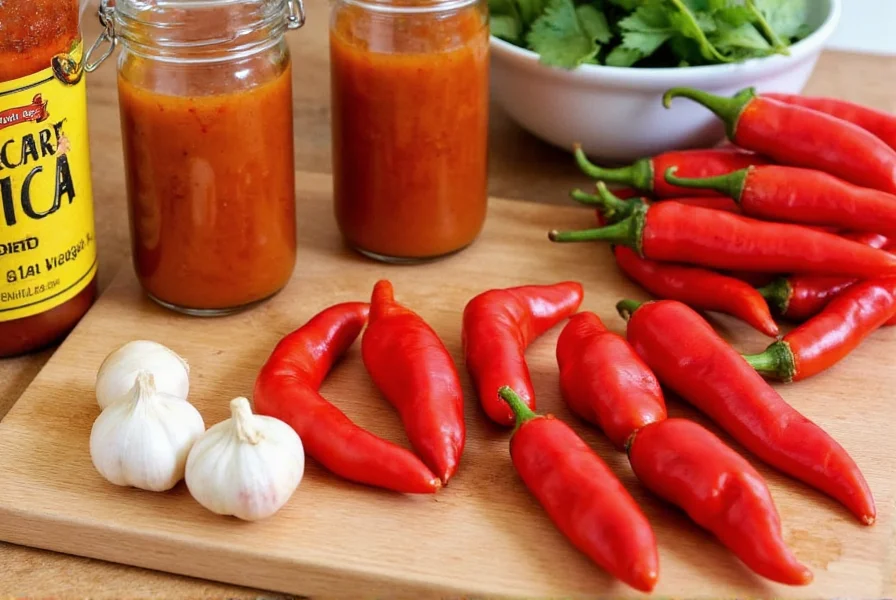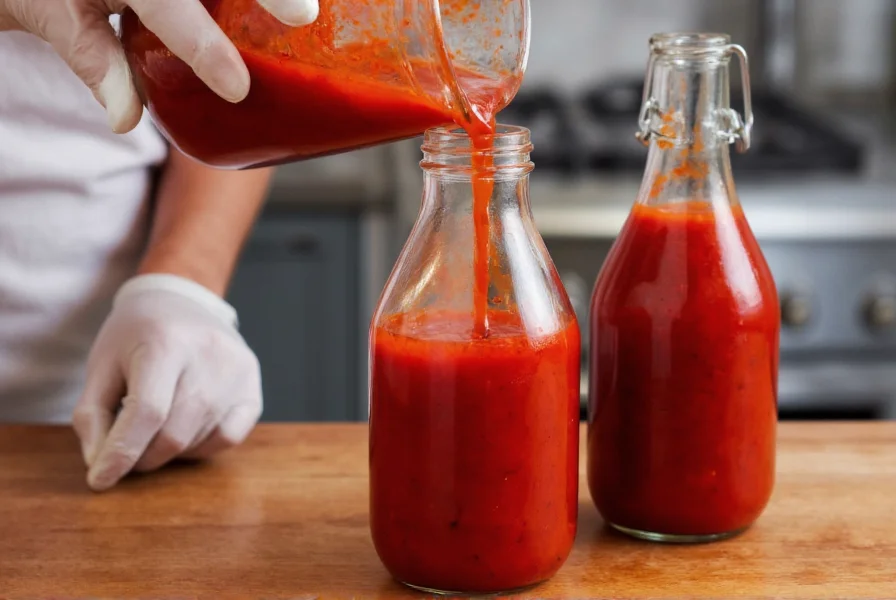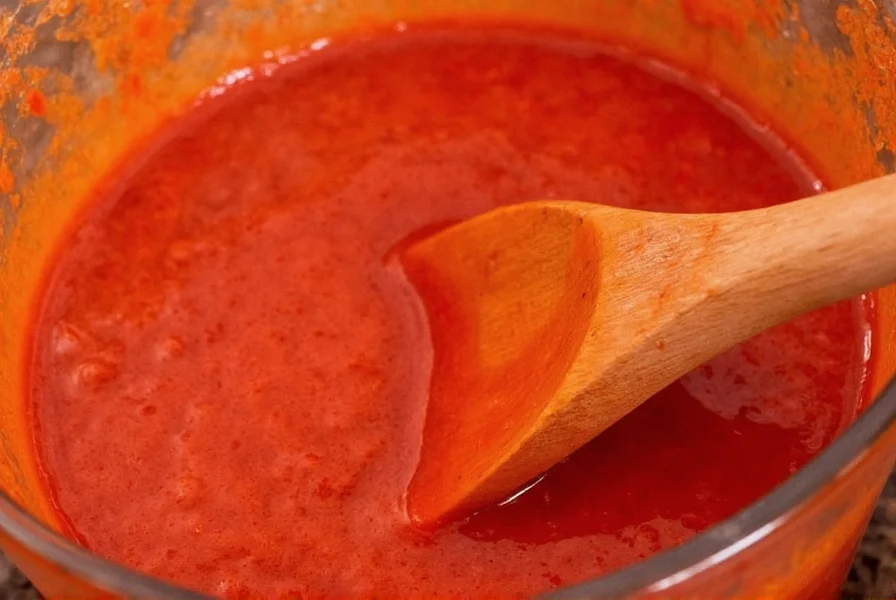The simplest way to make hot pepper sauce at home requires just 5 ingredients: fresh hot peppers (like habaneros or jalapeños), vinegar, garlic, salt, and sugar. Combine roasted peppers with vinegar in a 1:1 ratio, blend until smooth, simmer for 10 minutes, then strain. This basic hot pepper sauce recipe yields a flavorful, shelf-stable condiment ready in under 30 minutes with proper safety precautions when handling spicy peppers.
Creating your own hot pepper sauce unlocks endless flavor possibilities while avoiding preservatives found in store-bought versions. Whether you're a beginner or experienced cook, this guide provides everything needed to craft professional-quality sauce from your kitchen. Unlike commercial products that often contain artificial ingredients, homemade versions let you control heat levels and flavor profiles precisely.
Essential Ingredients for Perfect Hot Pepper Sauce
Selecting quality ingredients forms the foundation of exceptional hot sauce. The pepper variety determines your sauce's character, while supporting ingredients balance and preserve the final product.
| Pepper Type | Scoville Units | Flavor Profile | Best For |
|---|---|---|---|
| Habanero | 100,000-350,000 | Fruity, citrusy, floral | Tropical-style sauces |
| Serrano | 10,000-23,000 | Grassy, bright | Mexican-inspired sauces |
| Jalapeño | 2,500-8,000 | Grassy, vegetal | Milder table sauces |
| Ghost Pepper | 800,000-1,000,000 | Smoky, sweet upfront | Extreme heat sauces |
When selecting peppers, choose firm specimens without soft spots. For balanced flavor in your easy homemade hot pepper sauce recipe, combine different pepper varieties—pair a high-heat pepper like habanero with milder jalapeños for complexity. Vinegar choice significantly impacts flavor; white vinegar provides clean acidity, while apple cider vinegar adds fruity notes perfect for how to make spicy sauce from fresh peppers.

Equipment Checklist for Safe Preparation
Proper equipment ensures both safety and quality. Essential items include:
- Heat-resistant gloves (nitrile preferred)
- Stainless steel pots (avoid aluminum)
- High-powered blender
- Fine-mesh strainer or cheesecloth
- Funnel and sterilized glass bottles
- Long-handled spoons
Never use bare hands when handling super-hot peppers like ghost peppers or scorpion varieties. The oils penetrate skin and can cause severe irritation. For those wondering how to make hot sauce without burning hands, always wear gloves and avoid touching your face during preparation.
Step-by-Step Hot Pepper Sauce Preparation
Follow this professional method for consistent results every time you attempt how to make hot pepper sauce from scratch.
- Prepare peppers: Roast whole peppers over open flame or under broiler until blackened (5-7 minutes). Place in covered bowl for 10 minutes to steam, then remove skins.
- Combine ingredients: In blender, combine 1 cup prepared peppers, 1 cup vinegar, 3 garlic cloves, 1 tsp salt, and 1 tsp sugar. Adjust ratios based on desired heat level.
- Blend thoroughly: Process until completely smooth (2-3 minutes). For smoother texture, strain through fine-mesh sieve.
- Simmer sauce: Transfer to saucepan and simmer gently for 10 minutes to meld flavors and ensure food safety.
- Bottle properly: Pour hot sauce into sterilized bottles using funnel. Seal immediately and invert for 5 minutes to create vacuum seal.

Customizing Your Hot Pepper Sauce Recipe
Personalize your creation with these professional variations that address common queries about how to make different types of hot sauce.
Flavor Variations
- Tropical twist: Add 1/2 cup mango or pineapple during blending
- Smoky depth: Include 1-2 chipotle peppers in adobo sauce
- Herbaceous notes: Blend in fresh cilantro or basil (1/4 cup)
- Sweet heat: Substitute honey for sugar (1-2 tbsp)
Heat Level Adjustments
Control spiciness by modifying these elements in your homemade hot pepper sauce recipe:
- Remove seeds and white membranes (placenta) for milder sauce
- Add bell peppers to dilute heat without sacrificing volume
- Increase vinegar ratio to 1.5:1 for more balanced heat
- Include 1/4 cup roasted carrots for natural sweetness that counters heat
Storage Guidelines and Shelf Life
Proper storage ensures both safety and flavor preservation for your how to make hot sauce that lasts efforts. Follow these guidelines:
- Refrigerate all homemade sauces (shelf-stable only with proper pH below 3.8)
- Use within 3-6 months for peak flavor (longer storage causes flavor degradation)
- Always use clean utensils when handling sauce to prevent contamination
- Discard if mold appears, consistency changes, or off odors develop
For extended shelf life, process bottled sauce in a water bath canner for 15 minutes. This how to preserve homemade hot pepper sauce method creates a vacuum seal that prevents spoilage. Always check seals before storage and refrigerate after opening.
Troubleshooting Common Hot Sauce Issues
Resolve these frequent challenges when learning how to make perfect hot pepper sauce:
| Issue | Probable Cause | Solution |
|---|---|---|
| Sauce too thin | Excess liquid or insufficient simmering | Simmer uncovered 5-10 minutes to reduce |
| Bitter flavor | Over-roasted peppers or burnt garlic | Add 1/2 tsp sugar or fruit to balance |
| Separation | Insufficient blending or emulsification | Re-blend with 1/4 tsp xanthan gum |
| Weak heat | Pepper variety or improper preparation | Add fresh pepper seeds or hotter variety |
Safety First: Handling Extremely Hot Peppers
When working with super-hot varieties in your how to make extremely hot sauce experiments, follow these critical safety measures:
- Wear nitrile gloves (latex doesn't block capsaicin)
- Use eye protection when handling ghost peppers or hotter
- Work in well-ventilated area or outdoors (pepper fumes can irritate lungs)
- Never use bare hands then touch eyes or sensitive areas
- Have dairy products nearby (milk, yogurt) to neutralize burns
If you experience skin irritation, apply milk or yogurt to affected area—oil-based remedies like coconut oil can worsen the burn by spreading capsaicin. For those researching how to make hot pepper sauce safely, these precautions are non-negotiable when handling high-Scoville peppers.











 浙公网安备
33010002000092号
浙公网安备
33010002000092号 浙B2-20120091-4
浙B2-20120091-4